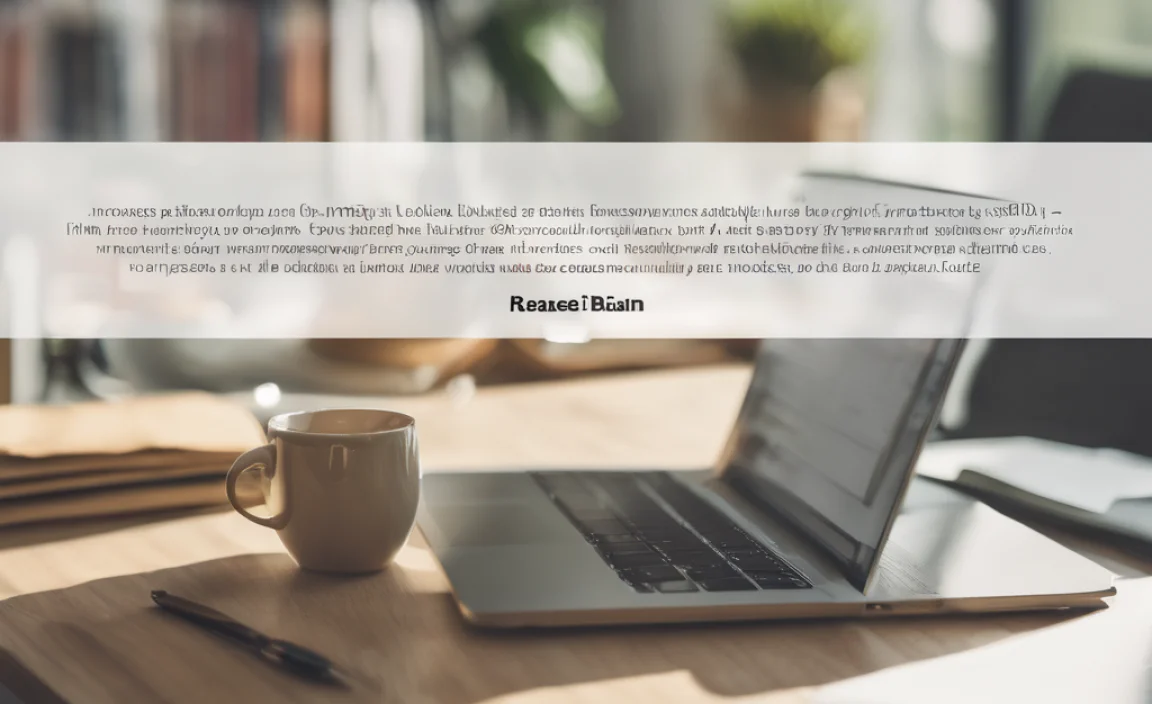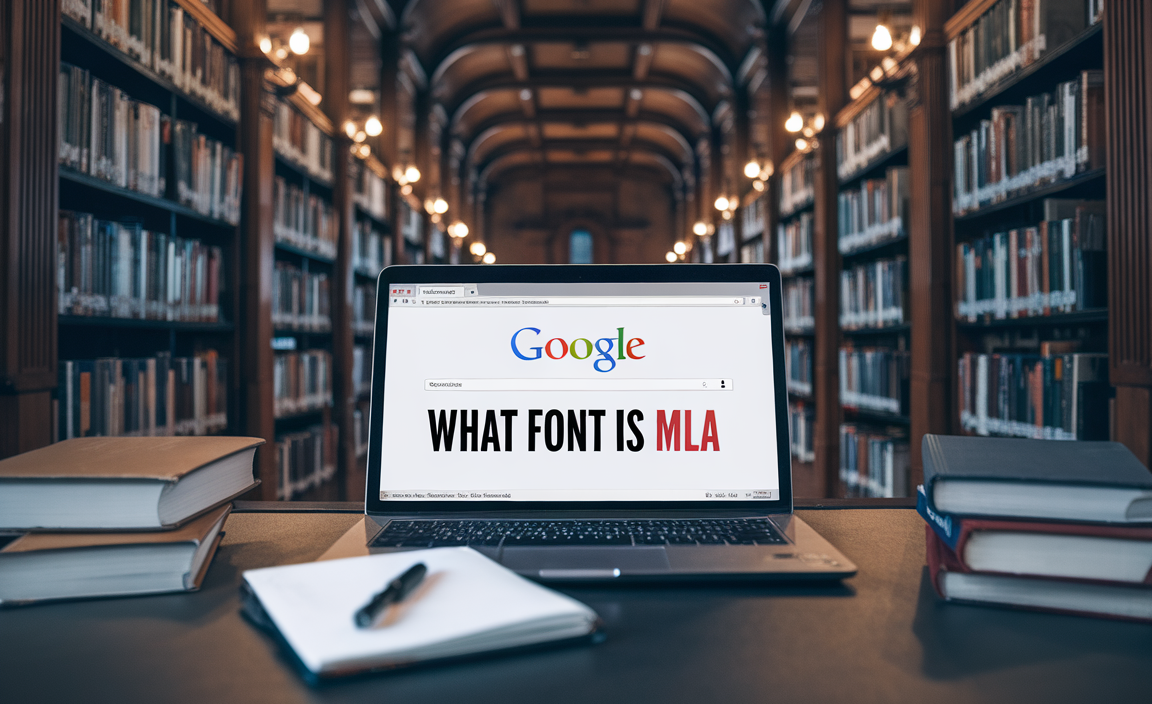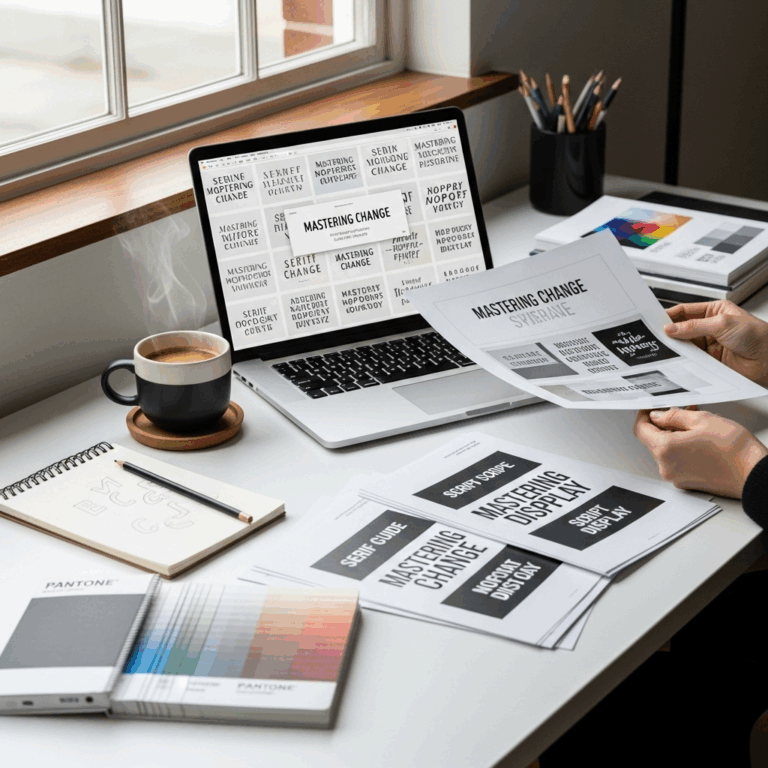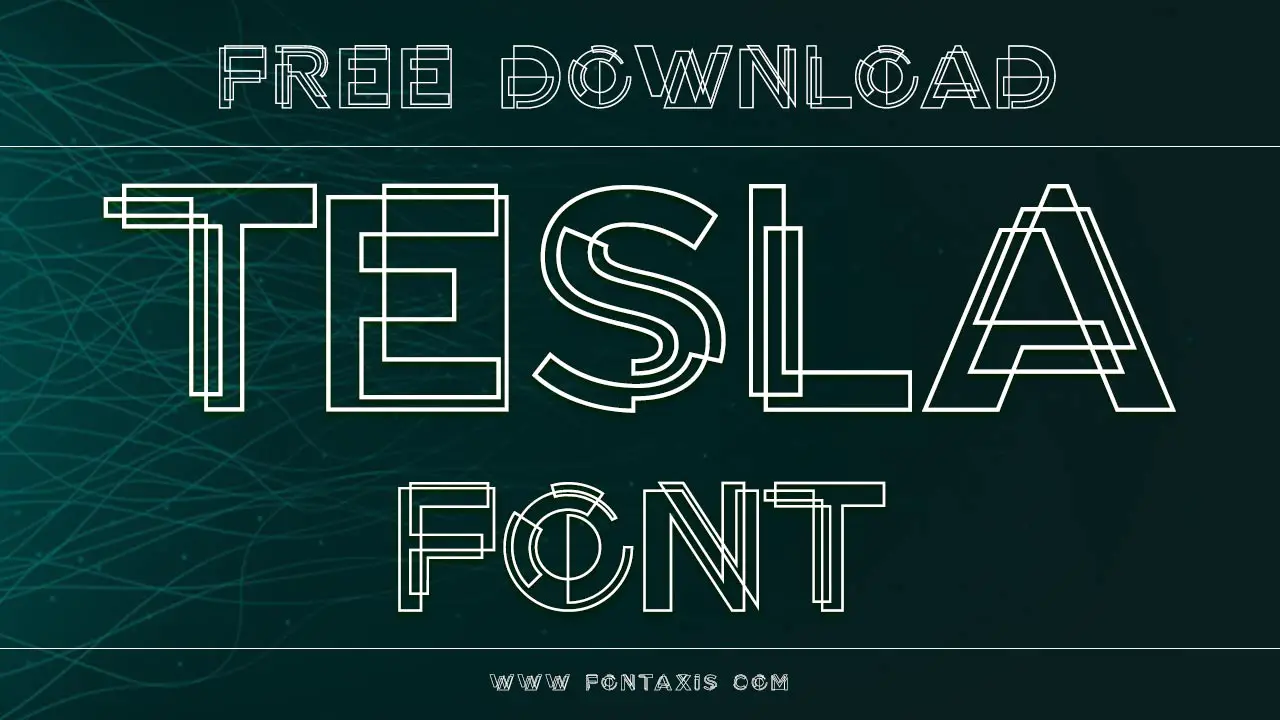The Breathine Font is a beautifully versatile sans-serif typeface, perfect for creating clean, modern, and inviting designs. It excels in both digital and print, offering excellent readability and a welcoming aesthetic for branding, web, and editorial projects.
Ever found yourself staring at a blank screen, a mountain of design ideas, but no perfect font to bring them to life? Choosing the right typeface can feel like a huge decision. It sets the mood, guides the reader’s eye, and is a core part of your visual story. Sometimes, font hunting feels complicated, with endless options and jargon that can make your head spin. But what if there was a font that felt just right – clean, approachable, and ready for anything? Let’s explore the world of the Breathine Font. We’ll uncover what makes it special and how you can use it to make your designs shine, step by step.
What is Breathine Font?
Breathine Font is a modern sans-serif typeface celebrated for its clean lines, balanced proportions, and inviting, friendly character. Designed with readability and versatility in mind, it’s a fantastic choice for a wide range of design applications, from professional branding and web design to creative editorial layouts and everyday design tasks. Its clarity and contemporary feel make it stand out without being overly decorative, ensuring that your message always takes center stage.
Sans-serif fonts, like Breathine, are characterized by the absence of serifs – those small decorative strokes found at the end of a letter’s main strokes. This minimalist approach often lends itself to a more modern, clean, and straightforward aesthetic. Breathine embraces this, offering a highly legible and visually pleasing experience across various sizes and mediums.
Why Choose Breathine Font? Key Features and Benefits
When you’re selecting a font, you’re not just picking characters; you’re choosing a voice and a feeling for your project. Breathine Font offers several compelling features that make it a noteworthy contender for your design toolkit:
- Exceptional Readability: Breathine Font boasts clear letterforms and generous spacing, making it incredibly easy to read, even in small sizes or on screens. This is crucial for user experience and ensures your content is accessible and engaging.
- Versatile Design: Whether you need a font for headings, body text, logos, or user interfaces, Breathine adapts beautifully. Its balanced weight and structure work well in diverse contexts.
- Modern & Welcoming Aesthetic: It strikes a perfect balance between being contemporary and approachable. It feels professional without being stiff, and friendly without being overly casual.
- Typographic Hierarchy: With a well-designed range of weights (from light to bold), Breathine makes it easy to create visual hierarchy in your designs, guiding the reader’s attention effectively.
- Timeless Appeal: While modern, Breathine avoids fleeting trends. Its clean design ensures it will remain relevant and appealing for years to come.
Where to Find and Use Breathine Font
Breathine Font is readily available, making it accessible for designers at all levels. You can typically find it on popular font marketplaces and platforms. For instance, many designers source high-quality fonts from places like MyFonts, Fontspring, or independent foundries. It’s always a good idea to check the licensing terms to ensure it meets your project’s needs. For example, Google Fonts offers a vast library of free, high-quality fonts, though Breathine might be a premium option on other platforms, offering unique features or broader licensing.
Its applications are virtually limitless:
- Branding & Logos: Create a memorable and professional brand identity that communicates clarity and trust.
- Web Design: Ensure your website’s text is easy to read on all devices, improving user engagement and SEO.
- Editorial Design: Perfect for magazines, books, and reports where long-form reading is key.
- Marketing Materials: Design brochures, flyers, and social media graphics that are both attractive and informative.
- User Interface (UI) Design: Use its readability for buttons, menus, and application text.
- Presentations: Make your slide decks clear, concise, and visually appealing.
Exploring Breathine Font: Styles and Weights
A key strength of any robust font family is its range of styles and weights. Breathine Font typically comes with several variations, allowing for dynamic typographic compositions. These variations aren’t just for show; they are essential tools for creating visual interest and clear information hierarchy.
Commonly, you’ll find weights like:
- Thin/Light: Excellent for subtle headings, secondary text, or elegant accents where you want a delicate touch.
- Regular/Book: The workhorse of the family, perfect for body text in both print and digital, offering superb readability.
- Medium: A slightly heavier option that provides more emphasis than Regular, suitable for subheadings or short paragraphs that need to stand out a bit more.
- Semi-Bold/Bold: Ideal for strong headings, calls to action, or important highlights that require immediate attention.
- Black/Heavy: For maximum impact, often used for very prominent display titles or design statements.
Some versions of Breathine might also include italic counterparts for each weight. These are crucial for adding emphasis within text or for specific stylistic choices, maintaining harmony with the roman (upright) style.
How to Integrate Breathine Font into Your Designs
Using a new font effectively is all about understanding how it interacts with your other design elements. Here’s a simple approach to integrating Breathine into your projects:
Step 1: Understand Your Project’s Needs
Before you even open your design software, consider what you want to achieve. Is it a website needing clear navigation? A brand guide requiring a strong, versatile logo? A brochure that needs to be easy to skim? Knowing your goal helps you choose the right weights and styles of Breathine.
Step 2: Experiment with Weights and Sizes
Don’t stick to just one weight. Try using a bolder weight for your main headings, a regular weight for body text, and perhaps a lighter weight for captions or supplementary information. This creates a visually pleasing hierarchy.
Example Hierarchy:
- Main Headline (Bold): Breathine, 36pt
- Sub-headline (Medium): Breathine, 24pt
- Body Text (Regular): Breathine, 12pt
- Captions (Light): Breathine, 10pt
Step 3: Consider Font Pairings
While Breathine is great on its own, pairing it with other fonts can add depth and interest. Since Breathine is a sans-serif, consider pairing it with:
- A contrasting serif font: This classic pairing can add sophistication and a touch of tradition. Look for a serif with good readability, perhaps something like Garamond or Merriweather.
- A more decorative display font: For very specific elements, like a unique event title, you might use a more expressive font. Use this sparingly so it doesn’t clash with Breathine’s clean nature.
- Another sans-serif with a different personality: If you want to stick with sans-serifs, choose one that has a very different character – perhaps something more geometric or more humanist. For instance, Lato or Open Sans offer complementary sans-serif styles.
Step 4: Pay Attention to Spacing (Kerning & Tracking)
Good typography is in the details!
Kerning refers to the space between individual letters. Over time, designers adjust kerning so letters that might otherwise bump into each other or have awkward gaps fit together beautifully.
Tracking is the overall spacing of a group of letters.
Breathine, being well-designed, often has good default kerning, but for large headlines or sensitive branding, fine-tuning can make a big difference. Most design software allows you to adjust these settings.
Step 5: Test Across Different Platforms
What looks great on your high-resolution monitor might render differently on a mobile phone or in a printed brochure. Always test Breathine in its final intended environment. Ensure it remains legible and visually appealing across various contexts.
Breathine Font in Action: Design Scenarios
Let’s look at a few scenarios where Breathine Font truly shines:
Scenario 1: Startup Branding
A new tech startup needs a brand that feels innovative, reliable, and accessible. They can use Breathine for their logo, perhaps picking a bold weight for impact. For their website, Breathine Regular becomes the go-to for body text, ensuring clear communication, while Medium or Semi-Bold is used for section headings, creating an organized and easy-to-navigate user experience.
Scenario 2: Food Blog Design
A food blogger wants to create a friendly, easy-to-read blog. Breathine Light or Regular makes perfect sense for recipe instructions and descriptive text, ensuring readers can follow along without straining their eyes. A bolder weight of Breathine could be used for recipe titles or section headers, providing clear visual cues.
Scenario 3: Non-Profit Organization Materials
A non-profit needs to convey professionalism, trust, and the importance of their cause. Breathine Font in its various weights can be used across all their print and digital materials. A strong headline in Breathine Bold might announce a campaign, while the Regular weight ensures donor information and calls to action are clearly presented in letters and on their website.
Comparing Breathine with Other Sans-Serif Fonts
To truly appreciate Breathine, it’s helpful to compare it with other popular sans-serif fonts. This helps you understand its unique quirks and where it best fits in your design toolkit.
Let’s consider a few:
| Font Name | Primary Characteristics | Best Use Cases | Breathine Comparison |
|---|---|---|---|
| Open Sans | Humanist sans-serif, very neutral, highly legible, wide language support. | Websites, UI, body text, corporate identity. | Breathine often has a slightly warmer or more distinctive personality than the very neutral Open Sans. Its forms can feel a bit more crafted. |
| Lato | Semi-rounded details, feels friendly and stable, semi-condensed. | Websites, branding, headlines, longer texts. | Lato can sometimes feel more ‘structured’ due to its semi-condensed nature. Breathine might offer a more open, inviting feel. |
| Montserrat | Geometric sans-serif, inspired by old posters and signs; has a strong, modern graphic quality. | Headlines, display text, branding with a strong visual punch. | Montserrat is distinctly geometric, feeling more structured and graphic. Breathine is generally softer and more organically proportioned, making it better for body text. |
| Proxima Nova | Hybrid of geometric and humanist styles, very popular for web and branding, clean and professional. | Web design, UI, branding, editorial. | Proxima Nova is a premium choice often seen as a default modern sans. Breathine can offer a similar modern feel with potentially a slightly more pronounced character or a different licensing structure. |
The key takeaway is that while many sans-serifs share the goal of readability, they achieve it with different nuances. Breathine aims for a sweet spot: modern appeal with genuine warmth and clarity, making it a valuable and versatile asset.
Tips for Maximizing Readability with Any Font
Beyond choosing a great font like Breathine, several design principles ensure your text is a pleasure to read:
- Line Length: Aim for around 45-75 characters per line for optimal reading comfort. Too short, and the eye jumps too much; too long, and it’s hard to track.
- Line Height (Leading): The space between lines of text. For body text, a leading that’s 1.2 to 1.5 times the font size is a good starting point.
- Text Contrast: Ensure sufficient contrast between your text color and background color. This is vital for accessibility and preventing eye strain. Tools like the WebAIM Contrast Checker can verify if your color choices meet accessibility standards.
- Whitespace: Don’t cram text together. Generous margins and padding allow the text to breathe and make the overall design cleaner and more inviting.
- Font Size: Use appropriate font sizes for your intended audience and medium. For web body text, 16px is a common and readable base size.
Frequently Asked Questions About Breathine Font
Q1: Is Breathine Font free to use?
A1: Availability and cost can vary. While some fonts are free on platforms like Google Fonts, Breathine often appears on premium font marketplaces. Always check the specific license for the version you are using to confirm usage rights and any associated fees for commercial projects.
Q2: What makes Breathine a good choice for body text?
A2: Breathine’s excellent readability, balanced letterforms, and clear structure make it ideal for conveying longer passages of text. It avoids distracting elements and ensures the reader can focus on the content.
Q3: Can I use Breathine for both print and web design?
A3: Absolutely! Breathine is designed for versatility. Its clear rendering works beautifully on screen and its well-defined forms translate perfectly to print, making it suitable for a wide array of projects.
Q4: What kind of personality does Breathine Font have?
A4: Breathine has a modern, clean, and approachable personality. It’s professional and reliable but also friendly and welcoming, making it a versatile choice that doesn’t feel cold or overly formal.
Q5: How do I pair Breathine with other fonts?
A5: Breathine pairs well with classic serif fonts for a sophisticated contrast, or with other sans-serifs that have a distinct personality. You can also use more artistic display fonts sparingly for headlines, letting Breathine handle the main text.
Q6: Are there different versions of Breathine Font?
A6: Typically, font families like Breathine come in various weights (e.g., Light, Regular, Bold) and sometimes include italic styles. This range allows for creating visual hierarchy and adding emphasis within your designs.
Conclusion
Breathine Font offers a compelling blend of modern design, exceptional readability, and versatile application. It’s the kind of typeface that makes your design process smoother and the end result more polished. Whether you’re crafting a new brand identity, refining a website’s user experience, or laying out a detailed report, Breathine provides a reliable and aesthetically pleasing foundation.
By understanding its strengths, experimenting with its weights, and considering how it complements other elements in your design, you can harness the full power of Breathine. Don’t be afraid to let this clean, friendly sans-serif guide your next project. Happy designing!










